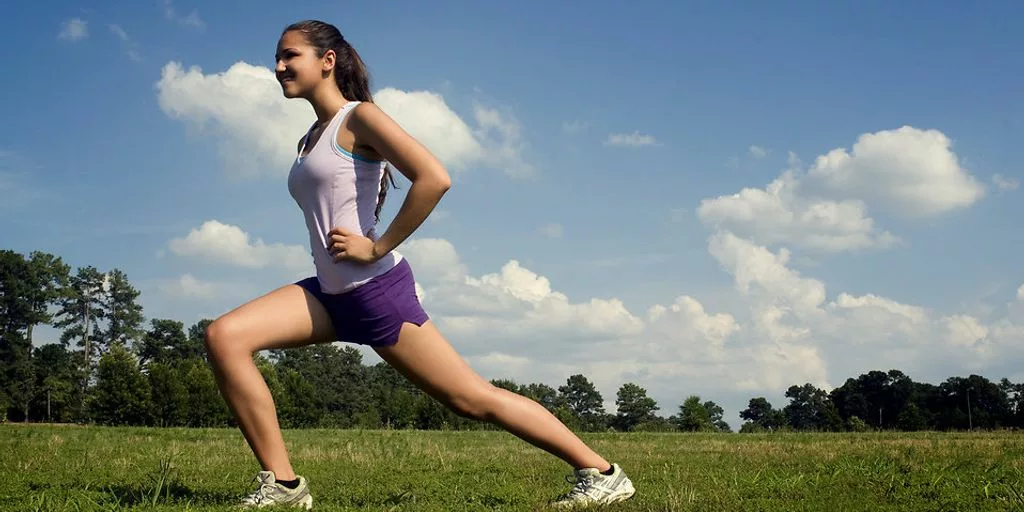
Physical activity is a cornerstone of a healthy lifestyle, offering a multitude of benefits that extend far beyond physical health. From enhancing mental well-being to promoting longevity and vitality, staying active is essential for improving the quality of life. This article delves into the transformative power of movement and how it can positively impact various aspects of our lives.
Key Takeaways
- Regular physical activity significantly improves mental health, reducing stress, anxiety, and depression.
- Staying active can add years to your life by reducing the risk of chronic diseases and promoting healthy aging.
- Engaging in enjoyable and personalized forms of movement ensures that physical activity becomes a sustainable part of daily life.
- Functional benefits of regular activity include improved mobility, flexibility, and physical independence, especially in older adults.
- An active lifestyle fosters social connections, boosts self-esteem, and brings joy and fulfillment.
Enhancing Mental Well-being Through Movement

Boosting Mood and Reducing Stress
Movement is a great way to enhance our well-being. Even a short burst of 10 minutes’ brisk walking can boost our mood and increase our mental alertness. Engaging in physical activity releases endorphins, which are natural mood lifters. Regular exercise can significantly reduce stress levels, making it easier to manage daily challenges.
Improving Cognitive Function
Physical activity isn’t just about the body; it’s also about the mind. Engaging in moderate-to-vigorous physical activity can lead to immediate benefits such as improved cognition for children and reduced anxiety for adults. It keeps your thinking sharp, lowers the risk of depression, and contributes to better sleep.
Combating Anxiety and Depression
Exercise is not just about aerobic capacity and muscle size. Sure, exercise can improve your physical health and your physique, but it also has profound effects on mental health. Regular physical activity can help combat anxiety and depression by providing a sense of purpose and accomplishment. It also helps in managing symptoms and improving overall quality of life.
Longevity and Vitality: The Lifelong Benefits of Staying Active
Adding Years to Your Life
The impact of physical activity on longevity is profound. Even a small increase in moderate-to-vigorous physical activity can prevent a significant number of deaths annually. Taking more steps daily and maintaining a consistent activity level contribute to a longer, healthier life.
Reducing Risk of Chronic Diseases
Staying active is not just about adding years to your life but also about enhancing the quality of those years. Regular physical activity helps manage chronic health conditions and disabilities, reducing the risk of diseases such as heart disease, diabetes, and certain cancers. By maintaining an active lifestyle, you can significantly lower your chances of developing these conditions.
Promoting Healthy Aging
The advantages of an active lifestyle extend far beyond reducing health risks. A recent study by the National Library of Medicine highlights that the 60+ who engage in regular physical activity experience a significantly healthier path to aging. The benefits are manifold, including enhanced quality of life and improved cognitive functioning. So much so, that antiquated descriptions like old and senior are being swiftly replaced with new-age and life-affirmative terms such as active aging.
Physical activity helps the 60+ live not just longer lives, but better ones, filled with vitality and joy.
Empowering Daily Life: Functional Benefits of Regular Activity

Regular physical activity is a cornerstone for enhancing daily life. It not only boosts your ability to perform everyday tasks but also significantly reduces the risk of falls and injuries. This is particularly crucial for older adults, as a diverse range of activities, including aerobic exercises, muscle-strengthening, and balance training, can lead to improved physical function and decreased fall risk.
Improving Mobility and Flexibility
Engaging in regular movement helps maintain and improve your mobility and flexibility. This is essential for performing daily activities with ease and comfort. Activities like stretching, yoga, and pilates are excellent for enhancing flexibility and ensuring that your body remains agile and responsive.
Preventing Falls and Injuries
One of the most significant benefits of staying active is the prevention of falls and injuries. Physical activity helps maintain muscle mass and bone density, which are crucial for stability and balance. Incorporating balance training and strength exercises into your routine can make a substantial difference in your overall safety and well-being.
Enhancing Physical Independence
Staying active empowers you to maintain your physical independence. This means being able to carry out daily tasks without assistance, which is vital for a fulfilling and self-sufficient life. Regular exercise supports muscle strength, joint health, and overall endurance, enabling you to live life on your terms.
Personalized and Enjoyable Forms of Movement

Embracing an active lifestyle is a journey, and every individual’s path is unique. It is crucial to find enjoyable and well-balanced forms of movement that resonate with personal preferences and abilities, whether it’s a brisk walk, gentle yoga, or a lively dance class. Personalizing physical activity ensures it becomes a sustainable and enjoyable part of daily life. By experimenting with different activities, individuals can discover what they enjoy most and are more likely to stick with it long-term. This personalized approach creates a positive association with physical activity, making it a regular and pleasurable part of one’s routine.
Movement for All Ages: Staying Active at Every Stage of Life
Active Childhood and Adolescence
Engaging in physical activities from a young age sets the foundation for a healthy lifestyle. Children and teenagers who stay active are more likely to develop strong bones and muscles, maintain a healthy weight, and improve their cardiovascular health. Encouraging kids to participate in sports, dance, or even simple outdoor play can foster a lifelong love for movement.
Maintaining Activity in Adulthood
Adulthood often brings a busy schedule, but it’s crucial to prioritize physical activity. Regular exercise helps manage stress, boosts energy levels, and supports overall well-being. Adults can benefit from a mix of aerobic exercises, strength training, and flexibility workouts. Finding enjoyable activities, whether it’s a brisk walk, yoga, or a lively dance class, ensures that staying active becomes a sustainable part of daily life.
Adapting Exercise for Older Adults
As we age, staying active remains essential for maintaining health and independence. Older adults should focus on exercises that enhance balance, mobility, and strength. Simple activities like walking, swimming, or gentle stretching can make a significant difference. The concept of active aging emphasizes the importance of movement in enhancing quality of life and cognitive function.
Movement is a powerful tool for improving well-being at any age. Embrace it as a lifelong journey, adapting activities to fit your stage of life and personal preferences.
The Social and Emotional Rewards of an Active Lifestyle

Building Community and Connection
Engaging in regular physical activities offers more than just physical benefits; it fosters a sense of community and connection. Whether it’s joining a local sports team, participating in group fitness classes, or simply walking with friends, staying active helps build meaningful relationships. These social interactions can significantly enhance mental health, reducing the risk of depression and anxiety.
Boosting Self-Esteem and Confidence
Regular physical activity is an investment in your mind, body, and soul. When it becomes a habit, it can foster your sense of self-worth and make you feel strong and powerful. You’ll feel better about your appearance and, by meeting even small exercise goals, you’ll feel a sense of achievement. This boost in self-esteem can translate into other areas of your life, making you more confident in your daily activities.
Creating Joy and Fulfillment Through Activity
Physical activity isn’t just about the body; it’s also about the mind. Engaging in activities you enjoy can bring immense joy and fulfillment. Whether it’s dancing, hiking, or playing a sport, finding an activity that you love can make exercise feel less like a chore and more like a fun part of your day. This joy and fulfillment can contribute to a more positive outlook on life, enhancing your overall well-being.
Staying active is not just about adding years to your life, but adding life to your years. The social and emotional rewards of an active lifestyle are invaluable, contributing to a happier, healthier you.
Conclusion
Incorporating regular physical activity into your daily routine is not just about adding years to your life, but also about adding life to your years. The benefits of staying active are extensive, from enhancing mental health and mood to reducing the risk of chronic diseases and improving overall quality of life. Whether it’s a brisk walk, a yoga session, or a dance class, finding enjoyable and personalized forms of movement can make a significant difference. Embrace the power of movement and take the first step towards a healthier, happier you.






